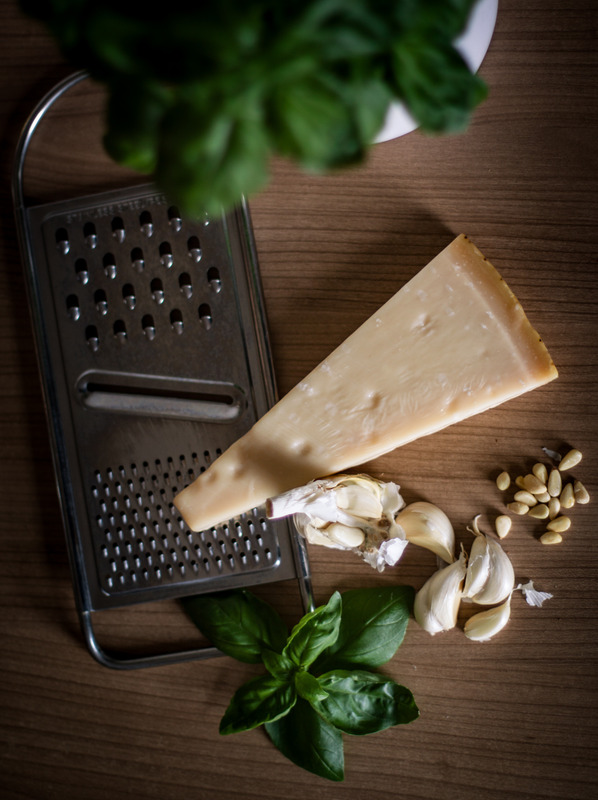Pesto: yesterday, today and wine pairing
Pesto is one of the Italian masterpieces and among the most famous cold sauce in the world.
Although the classic “Pesto alla Genovese” was created in Liguria only in the XIX century,
the practice of blending aromatic herbs with cheese and garlic has a very long tradition.
Virgilio ,in one of his scripts, says that in the Ancient Rome ages there was already such
“Moretum” which was a mixture of cheese , vinegar , oil, garlic and herbs. Moreover in the
Medieval times was quite common the usage of “agliata”, a blend of garlic and walnuts that
is considered to be the most direct ancestor of pesto.
In the Medieval times, Genova was one of the maritime republics and it used to trade many
elements including aromatic herbs and garlic. Aromatic herbs were utilized by rich people as
a garnish and from the poor ones to flavour vegetable soups. Garlic was considered by the
sailors an essential natural medicine to recover during their long journeys on the sea.
Thus the frequent use of garlic and aromatic herbs encouraged the idea to generate the
modern Pesto as is proved in the book “La Cucina Genovese” written in 1863 by Giovanni
Battista Ratto. The Italian writer described the recipe like this: “Take a piece of garlic, basil,
grated parmesan and Holland cheese mixed with pine nuts. Then mix everything with a bit of
butter and dilute it by olive oil”.
It’s interesting to note how the ingredients were already the same except Pecorino that was
added only at the beginning of the XX century to replace Holland cheese.

Pesto became popular quite quickly also because of the port of Genova that used to host
merchant ships and passengers from all over the world. The fame of Pesto grew so much
among the Americans that, after the second world war, some enterprises approached the
production of jars to transport the Italian speciality to the USA.
Nowadays there are many mutations of the original Pesto, counting almost 40 variations
within the use of different elements such as pistachios, almonds, walnuts, hazelnut etc…
Since 2007 has been established the “Pesto championship” that, every 2 years, takes place in
Genova. The maximum number of participants is 100 people which 50% has to be from
Liguria, 25% from Italy and 25% from the rest of the world.
In Genova ,since 2005, there is every year the “Pesto fair” where the famous sauce is
presented in combination with any food from the classic pasta to the dessert. Pesto,
nowadays, is not anymore used only as a sauce for pasta or bread but also to flavour biscuits,
ice cream, desserts, liquors etc…

Pesto wine pairing
Pesto is a very savoury sauce and, in terms of wine pairing, it can benefit from a wine high in
acidity. Hence, looking to a product of the same region, the best match would be Vermentino
Canatinae Lunae Bosoni, Colli di Luni DOC 2018.
This Vermentino is slightly aromatic, light bodied, with medium alcohol and on the palate
displays notes of stone fruit along with persistent acidity. Therefore the acidity of the wine
helps to clean the palate from the grainy sauce and enhance the perfume of pesto. Moreover,
the strong flavour of the basil match well the aromatic compounds of the wine and both blend
beautifully together in a long after taste.
Disregarding from the way to enjoy it, Pesto stands out for its authentic taste made by simple
ingredients and seems a picture of the Mediterranean scrub: green, dense and wonderfully
fragrant.
Author: Riccardo Pepi
